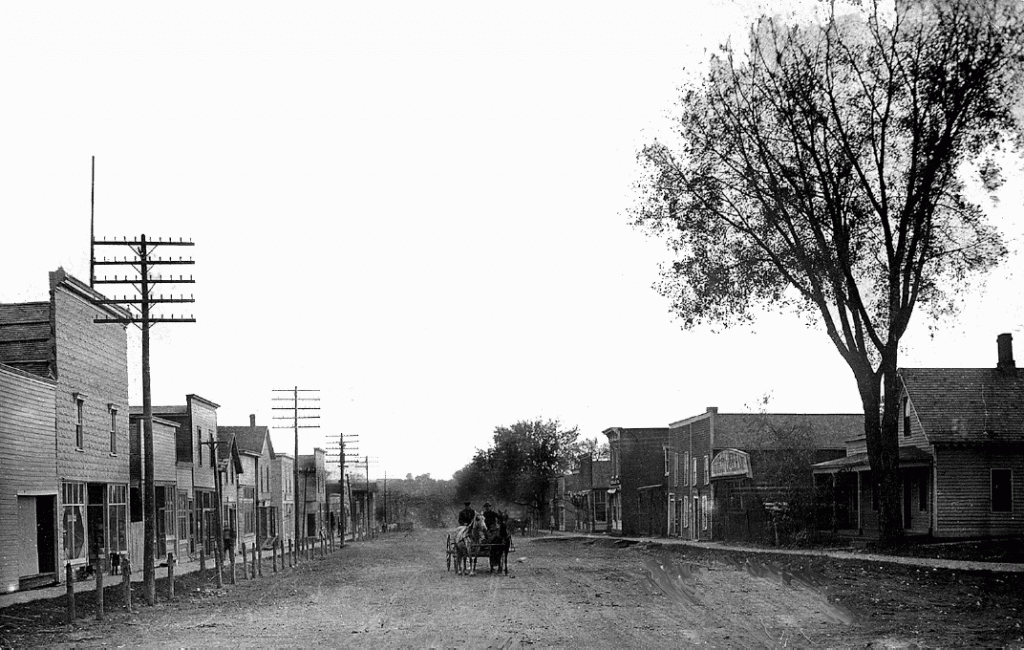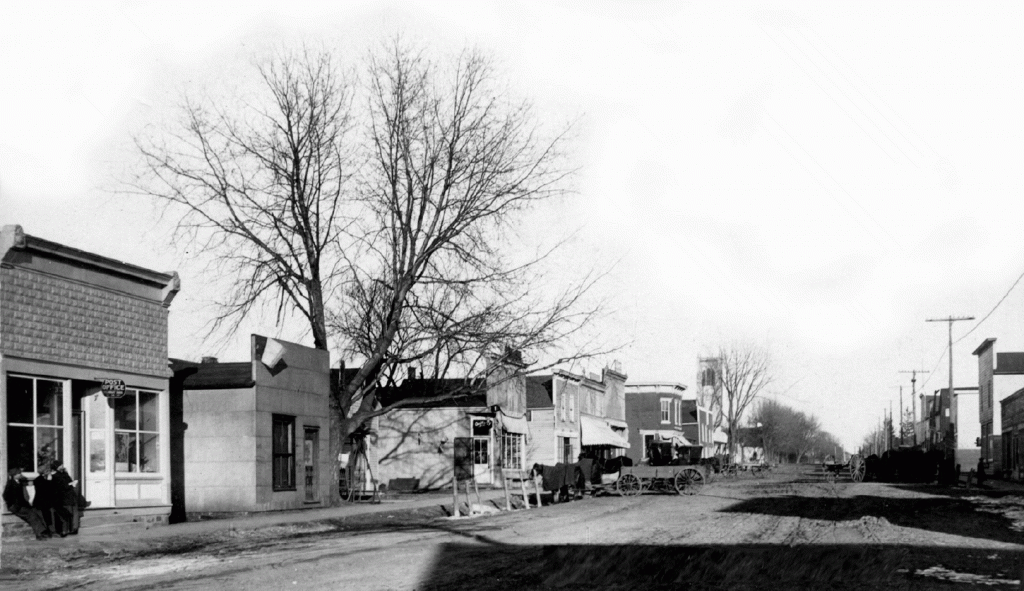
SRHS
Steamboat Rock Historical Society
AN UNBLEMISHED LAND
A Vast Open Prairie
The land of Iowa is predominately prairie, a name of French origin, that means grassland.
Our midwest prairie was a mystery to those who first laid their eyes on it. The forest through which they had threaded and hewn their way for two hundred miles give way first to meadows, and finally to the ocean of grass. It was a mystery that appears nowhere on earth but North America. No such prairies were or are found anywhere else in the world. There are deserts and steppes and pampas and llanos, but no great expanses of waving grass in a climate which seems perfectly adapted to the growth of forests.
Today it is a vanished mystery. The prairies have passed away forever. We now look out over the Iowa landscape and see a region of many tall groves of trees, plowed fields, farmsteads and towns. It has characteristics of its own which distinguish it from the lands once forested. The roads run in straight lines with the points of the compass.
The prairies are the result of their geological history which gave the grasses the advantage over the trees in the struggle for existence. In the remote time when the glaciers were beginning to recede the battle was waged between the grass and trees with the grasses winning. It was perhaps the prairie fire that kept the grasses winning over the years that followed.
We cannot imagine what the open prairie was like when our area was being first settled. At that time the only trees were near the river and on either side were miles and miles of open grasslands. Trees and groves were planted by the settlers around their farm steads as they were built and for many years only a few of these dotted the landscape, sometimes two to ten miles apart. In these early days of settling Clay township, it wasn’t unusual for a man to get lost in broad daylight, and quite common for it to happen at night.
It isn’t too hard to believe then, that when a person got caught away from home during a raging blizzard, the snow blowing with a violent wind so fierce that man nor horse could face the cutting storm and stay a straight course.
One man was within a mile and a quarter of his home about four o’clock in the afternoon when a terrible blizzard came up. He traveled around the prairie until it was nearly nine o’clock and finally came upon a house. He was so turned around that he didn’t know which direction he came from. The man of this house accompanied him and an hour later they saw the light in the lost mans house and came to his home. The man that had accompanied him stayed the night, and found his way back home the next day.
One night a stage driver and his passengers got lost in a storm, and drove around over the treeless prairie until two or three o’clock in the morning, when they caught sight of a light in a window that was always kept burning at night as a signal to stages and travelers. The stage drove to the house, where the driver and passengers spent the balance of the night, ate breakfast and continued their journey.
One dark night when the sky was absent of moon or stars a man was within a half mile of his home when he feared he had become lost. He traveled and traveled, and still did not know where he was. He finally decided to unhitch his team and wait until morning. It was so dark that he thought he would become hopelessly lost on the broad prairie. After unhitching his team and tying them to the wagon, he got ready to cover himself with what blankets and quilts he had with him and settle down for the rest of the night. He had not quite settled in when he heard a rooster crow within a few rods distance. On investigation he found that it was his own rooster crowing for morning (it was 4 a.m.). His family was grateful when he returned home unharmed.

There was no end to this kind of story in the early days of settlement prior to 1876. After that time roads, fences and artificial groves were becoming more prevalent, and were sufficient to enable day and night travelers to find their way.
Another hazard of the prairie was the “prairie fire.” These annual fires swept ruthlessly over the prairie. The early settlers had to plow a wide strip all around their houses, stables and hay stacks, or early in the fall mow a wide strip of prairie grass which after it was cured and dry they would burn off before the rest of the prairie grass was killed by frost and dry enough to burn; even then there was a chance that these measures were not enough. Hardly a year went by without a day or night or more being spent fighting prairie fires, to guard life and property. Often the fire would come with high wind, traveling fast; sparks and spears of grass flying for great distances in front of the main fire.
Frequently a fire would burn everything for miles, except here and there where a place had been plowed around. Sometimes tons of hay would be consumed in the stacks and corn fields yet to be picked would go up in smoke. During these fearful prairie fires stock and in some cases persons were caught by the flames and burned to death before their clothing could be removed from their bodies.
In a case sometime in the late 1860’s a farmers stable caught fire by one of these prairie fires, and in getting his stock out his clothes caught fire and he was so severely burned that he died within a few days.
Today with our modern bridges and highways, we can little imagine what it was like to have to ford a stream as one traveled from one place to another.
This was an even more challenging obstacle in times of high water. An example has been given of three men and two women who were visiting the town of Eldora. During the day a heavy shower came up , and when they were ready to return home they found the streams all out of their banks. It soon became a roaring torrent and they decided it wasn’t safe to try to cross without first swimming the horses over and testing the fording for the wagon. On man chose to try to swim the stream with one of his horses, and with great difficulty reached the other side. He had started at a point high up the stream, but the swift deep current carried the horse and rider far below the point he had expected to land.
They decided that it was too dangerous to try to bring the wagon and the rest of the party across until the water went down. One man was on one side, and two men and the two women were on the other side with the wagon and the other horse. One of the men with the remaining horse started to the nearest farm house to get a rig and come back for the women. The women in the company of the third man started out walking. The man with the horse got lost, and the women walked a long way wading in water, crossing next to impassable sloughs, now in the darkness of night. Such experiences ended with loss of life, stock and property.

© 2020 Steamboat Rock Historical Society | All Rights Reserved
Powered by Hawth Productions, LLC